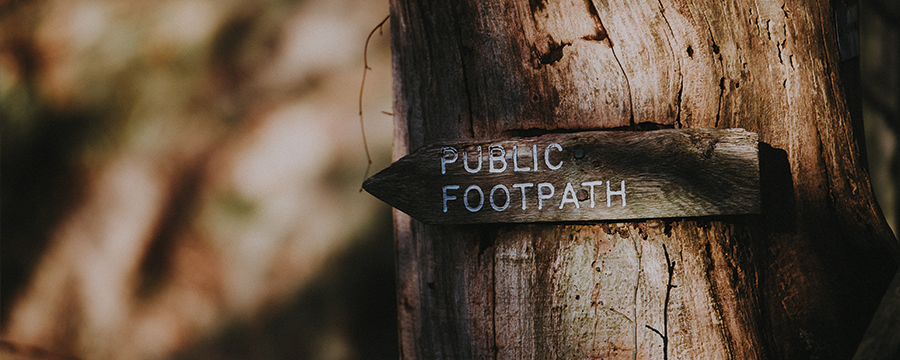If you’re looking to explore the great outdoors, there’s no better way than on footpaths, bridleways, and byways. These routes offer stunning scenery and a real sense of adventure, but finding them can be tricky if you don’t know where to look. We’ve put together this guide on how to find footpaths, bridleways, and byways near you!
What’s the difference between a footpath, bridleway, and byway?
Footpaths, bridleways, and byways are all classified according to their use. Footpaths are for pedestrians only, bridleways are for pedestrians and horse-riders, whereas depending on their sub-classification, byways may be open to all traffic, including cars).
Finding footpaths, bridleways, and byways near you
Although Ordnance Survey maps contain many routes, they are not exhaustive. The only place to find every single footpath, bridleway, and byway is the definitive map. The definitive map is a legal document which records all of the public rights of way in England and Wales. It’s kept by the local authority and is available to view online or in person.
We’ve collected all of the available digitised definitive maps for England and Wales, and created a single map of footpaths, bridleways, and byways.
Alternatively, to find the definitive map for your area, simply Google ‘definitive map [your town/county]’. Once you’ve found the map, zoom in to see the different types of paths that are available. Typically, green lines represent footpaths, blue lines represent bridleways, and red lines represent byways.
Can Google Maps show footpaths?
Google Maps does show some footpaths, bridleways, and byways. However, not all routes are included. If you’re planning on using Google Maps to find a path, we recommend cross-checking the route against the definitive map to make sure it’s still open and accessible.
What are my rights on a public footpath in the UK?
UK law gives you the right to walk on any public footpath, as long as you’re not causing a nuisance or interfering with the rights of others. Remember that the countryside is a shared space; be respectful of other users and take care not to damage the environment.
What are my rights on a bridleway in the UK?
As well as pedestrians, bridleways are open to horse-riders and cyclists. However, motorised vehicles are not permitted. If you’re planning on using a bridleway, make sure you stay alert and be prepared to give way to other users.
What are my rights on a byway in the UK?
Byways are open to all vehicles, in some instances including cars. However, they are usually only suitable for four-wheel drive vehicles or motorcycles. If you’re planning on using a byway, make sure you stay alert and be prepared to give way to other users.
Can a landowner close or move a public footpath?
No. Once a public footpath has been established, it cannot be moved or closed without going through the legal process. If you think a path has been closed illegally, you should contact your local authority.
Public rights of way are legally protected in the UK and it is an offence to obstruct or interfere with a public right of way. This includes building on or over a path, fencing off a path, or blocking a path with vehicles or other objects.
Conclusion
There are over 250,000 miles of footpaths in England and Wales. That’s enough to walk around the world more than once! With so many routes to choose from, you’re sure to find a path that’s perfect for you.
Remember, the definitive map is the only place to find every legally recognised footpath, bridleway, and byway. So if you’re planning on doing some exploring, make sure you consult it first!
